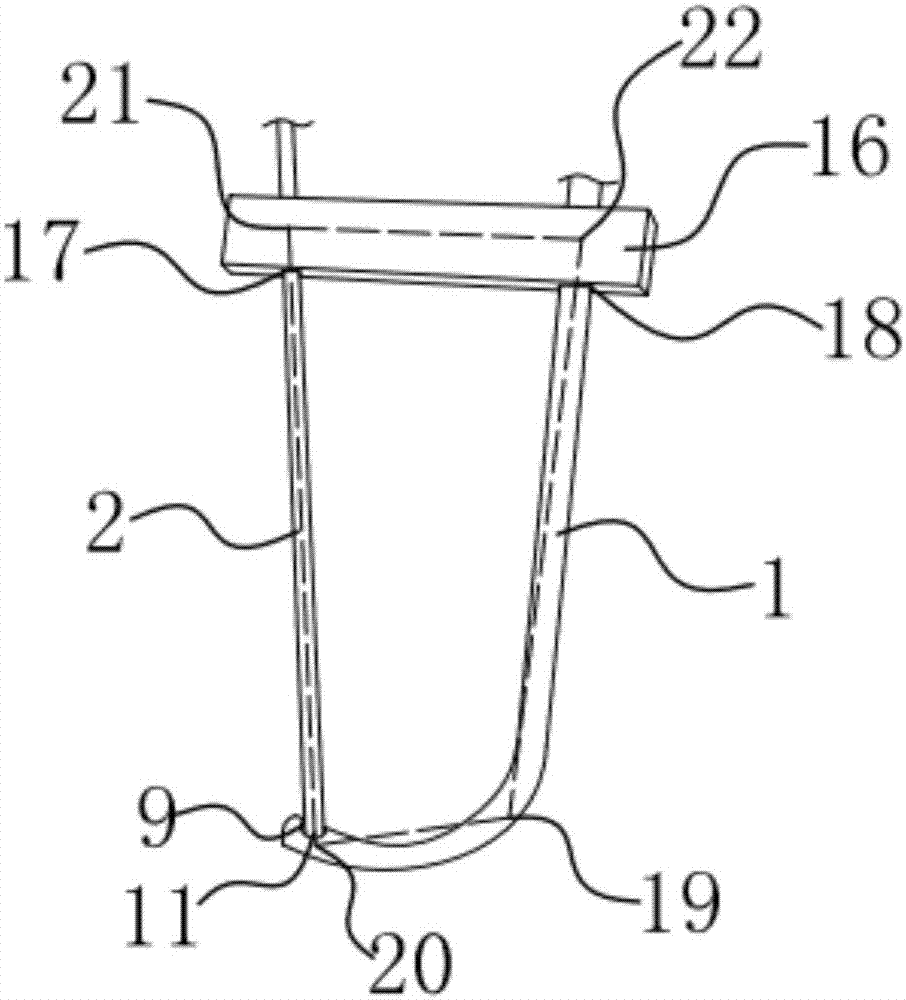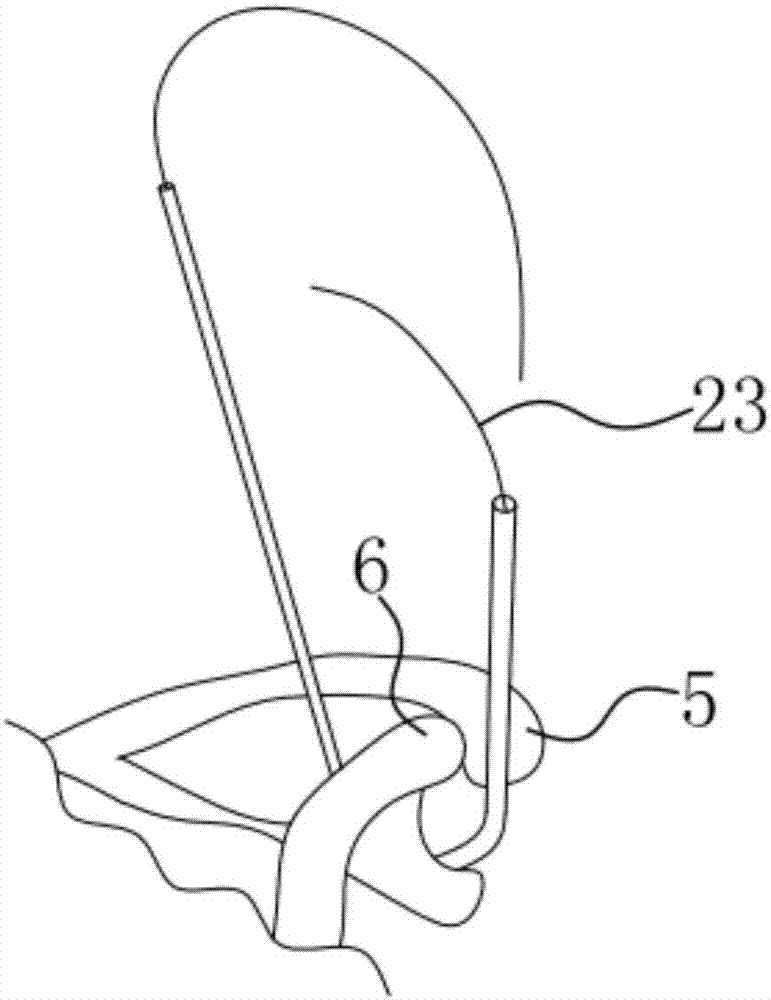Coracoclavicular ligament titanium cable reconstruction guider and reconstruction method for coracoclavicular ligament
A guider and titanium cable technology, which is applied in the field of medical devices, can solve the problems of coracoid process and clavicle injury, increase patient pain, and long operation time, so as to improve safety, save operation time, and prevent upward and backward movement. Effect
- Summary
- Abstract
- Description
- Claims
- Application Information
AI Technical Summary
Problems solved by technology
Method used
Image
Examples
Embodiment 1
[0037] like Figure 1-4 As shown, the titanium cable reconstruction guide for the coracoclavicular ligament includes a titanium cable lead-out part 1 and a titanium cable lead-in part 2. The titanium cable lead-in part 2 is provided with an introduction channel 3 for the titanium cable 23 to be introduced, and the titanium cable lead-out part 1 is provided with a There is a lead-out channel 4 for the titanium cable 23 to lead out, and one end of the titanium cable lead-out part 1 is a wrapping part 7 that can wrap around the coracoid process 5, and there is a connection between the wrapping part 7 and the titanium cable lead-in part 2, which can be connected and introduced. The communication and positioning structure of channel 3 and lead-out channel 4. The titanium cable exporting part 1 and the titanium cable introducing part 2 are combined to form a reconstructor for the introduction of the titanium cable 23. The reconstructor does not need to incise the tissue for internal...
Embodiment 2
[0042] like Figure 4-9 As shown, the method for reconstructing the coracoclavicular ligament with the titanium cable without perforation using the reconstruction guide in Example 1 includes the following steps:
[0043] a1. Wrap the wrapping part 7 of the titanium cable lead-out part 1 around the coracoid process 5 in the front and bottom direction of the clavicle 6, and then initially reset the acromioclavicular joint;
[0044] a2. Push the titanium pull-in part 2 along the positioning seat 16, and insert the titanium pull-in part 2 into the socket 9 of the titanium pull-out part 1;
[0045] a3. Insert the titanium cable 23 into the lead-in channel 3 of the titanium cable lead-in part 2, and continue to push the titanium cable 23 until the titanium cable 23 passes through the lead-out channel 4 of the titanium cable lead-out part 1 from the titanium cable lead-out part 1;
[0046] a4. Remove the titanium cable lead-in part 2 and the titanium cable lead-out part 1. At this t...
Embodiment 3
[0048] The method for perforating and reconstructing the coracoclavicular ligament with the reconstruction guide in Example 1 comprises the following steps:
[0049] b1. Place the wrapping part 7 of the titanium cable exporting part 1 on the lower part of the coracoid process 5, and initially reset the acromioclavicular joint;
[0050] b2. Push the titanium cable introduction part 2 along the positioning seat 16 to form a tunnel on the clavicle 6 and the coracoid process 5. The titanium cable introduction part 2 passes through the tunnel opened on the clavicle 6 and the coracoid process 5, and then inserts it into the In the jack 9 of the cable outlet 1;
[0051] b3. Insert the titanium cable 23 into the introduction channel 3 of the titanium cable introduction part 2, and continue to push the titanium cable 23 until the titanium cable 23 passes through the titanium cable export part 1 through the export channel 4 of the titanium cable export part 1;
[0052] b4. Remove the t...
PUM
 Login to View More
Login to View More Abstract
Description
Claims
Application Information
 Login to View More
Login to View More - R&D
- Intellectual Property
- Life Sciences
- Materials
- Tech Scout
- Unparalleled Data Quality
- Higher Quality Content
- 60% Fewer Hallucinations
Browse by: Latest US Patents, China's latest patents, Technical Efficacy Thesaurus, Application Domain, Technology Topic, Popular Technical Reports.
© 2025 PatSnap. All rights reserved.Legal|Privacy policy|Modern Slavery Act Transparency Statement|Sitemap|About US| Contact US: help@patsnap.com



